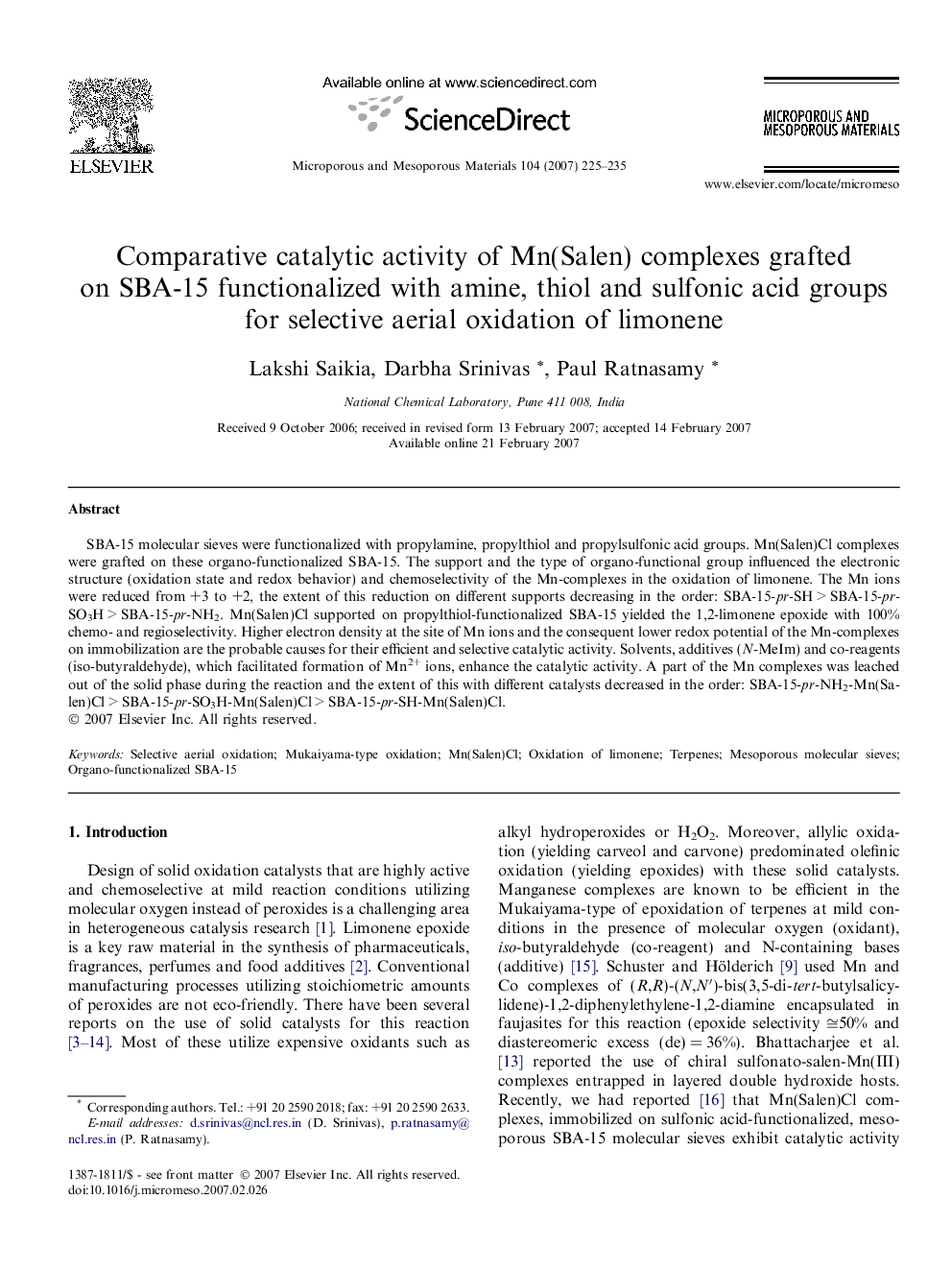| Article ID | Journal | Published Year | Pages | File Type |
|---|---|---|---|---|
| 77363 | Microporous and Mesoporous Materials | 2007 | 11 Pages |
SBA-15 molecular sieves were functionalized with propylamine, propylthiol and propylsulfonic acid groups. Mn(Salen)Cl complexes were grafted on these organo-functionalized SBA-15. The support and the type of organo-functional group influenced the electronic structure (oxidation state and redox behavior) and chemoselectivity of the Mn-complexes in the oxidation of limonene. The Mn ions were reduced from +3 to +2, the extent of this reduction on different supports decreasing in the order: SBA-15-pr-SH > SBA-15-pr-SO3H > SBA-15-pr-NH2. Mn(Salen)Cl supported on propylthiol-functionalized SBA-15 yielded the 1,2-limonene epoxide with 100% chemo- and regioselectivity. Higher electron density at the site of Mn ions and the consequent lower redox potential of the Mn-complexes on immobilization are the probable causes for their efficient and selective catalytic activity. Solvents, additives (N-MeIm) and co-reagents (iso-butyraldehyde), which facilitated formation of Mn2+ ions, enhance the catalytic activity. A part of the Mn complexes was leached out of the solid phase during the reaction and the extent of this with different catalysts decreased in the order: SBA-15-pr-NH2-Mn(Salen)Cl > SBA-15-pr-SO3H-Mn(Salen)Cl > SBA-15-pr-SH-Mn(Salen)Cl.
